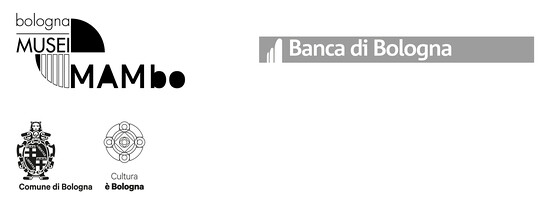| talo Zuffi Fronte e retro January 20–May 1, 2022 |
| MAMbo – Museum of Modern Art of Bologna via Don Minzoni 14 Bologna Italy |
| T +39 051 649 6611 info@mambo-bologna.org |
| www.mambo-bologna.org Facebook / Instagram / Twitter |
| Fronte e retro (Front & Back) is the title of the solo exhibition by Italo Zuffi (Imola, Italy, 1969), curated by Lorenzo Balbi and Davide Ferri, that opens at MAMbo – Museo d’Arte Moderna di Bologna on January 20, 2022.
The exhibition project, which will continue later in the space of Palazzo De’ Toschi, home of the initiatives dedicated to contemporary art of Banca di Bologna, allows to present for the first time in an extensive way the work of one of the most important Italian artists born in the late sixties. For MAMbo, the exhibition continues the research on Italian art that the museum has been carrying out for years, confirming the line of research that historically descends from the Galleria d’Arte Moderna di Bologna, presenting an artist linked to the territory in which the museum itself is located; while for Banca di Bologna, in the Conference Hall of Palazzo De’ Toschi, this will be the first solo exhibition dedicated to an Italian artist. Fronte e retro is ideally divided into two moments, capable of recalling and relaunching each other: on the one hand, at MAMbo, an itinerary that allows the artist’s work to be reread taking into account a spectrum of works ranging from the beginning, in the mid-nineties, until 2020. On the other hand, at Palazzo De’ Toschi, a series of new productions, of works created for the occasion and in reaction to the characteristics of the space, touches on some of the nodal aspects of his recent research. The exhibition, as a whole, revolves around some thematic nuclei that have always sustained Zuffi’s work and that are translated into contrasts and oppositions that can act on the body (sometimes that of the artist himself) as well as on the sculptural form: between the ideas of construction and at the same time of destruction/fall; of work and, at the same time, of energy dispersion; of softness and rigidity; of fragility and competition (especially with respect to the art system). The works presented at MAMbo—works of sculpture, photography, video and performance, languages around which Zuffi’s poetics has developed over time—reconstruct the artist’s path through new combinations and without necessarily following a chronological progression. The works exhibited, more than fifty, are the best known and emblematic of the artist but also some of those less seen and generate new hypotheses of dialogue between them. Among them, for example, two videos from the beginning: The Reminder, the image of a body that stretches and stiffens up to the limit of its possibilities, and Perimetro, in which a body tries to establish its relationship with the space generating a sense of waiting and perpetual irresolution. Particular attention is dedicated to the works that the artist brings together under the theme of competition: Italo Zuffi explores “from the inside” the mechanisms of power—especially of the contemporary art system—as they are reflected both in the institutions that represent and support them, and in society in general. He subverts them, ridicules them, interprets them with actions, performances and happenings capable of involving the public and becoming works/traces in the exhibition. Within the exhibition path, moreover, some elements (not completely configurable as sculptures) will be completed through performances: they are, more than props, objects waiting, or around which the energy of an action has already been consumed. The performances will activate the space in several points and will develop to compose a calendar that will touch different days throughout the duration of the exhibition. The exhibition at Palazzo De’ Toschi, which will follow the one at MAMbo in spring 2022, will focus mainly on sculptural practice, configured as a faithful reproduction of a form, and questioning of the same through intrusions and fragmentations. This part of the project, moreover, will highlight one of the fundamental aspects of Zuffi’s research in recent years: that of the investigation around the word, used both in poetic form (a collection of short poetic texts by the artist, written between 2013 and 2014, is entitled Poesie Doppie) and as an element from which the sculptural form is generated. |
 |